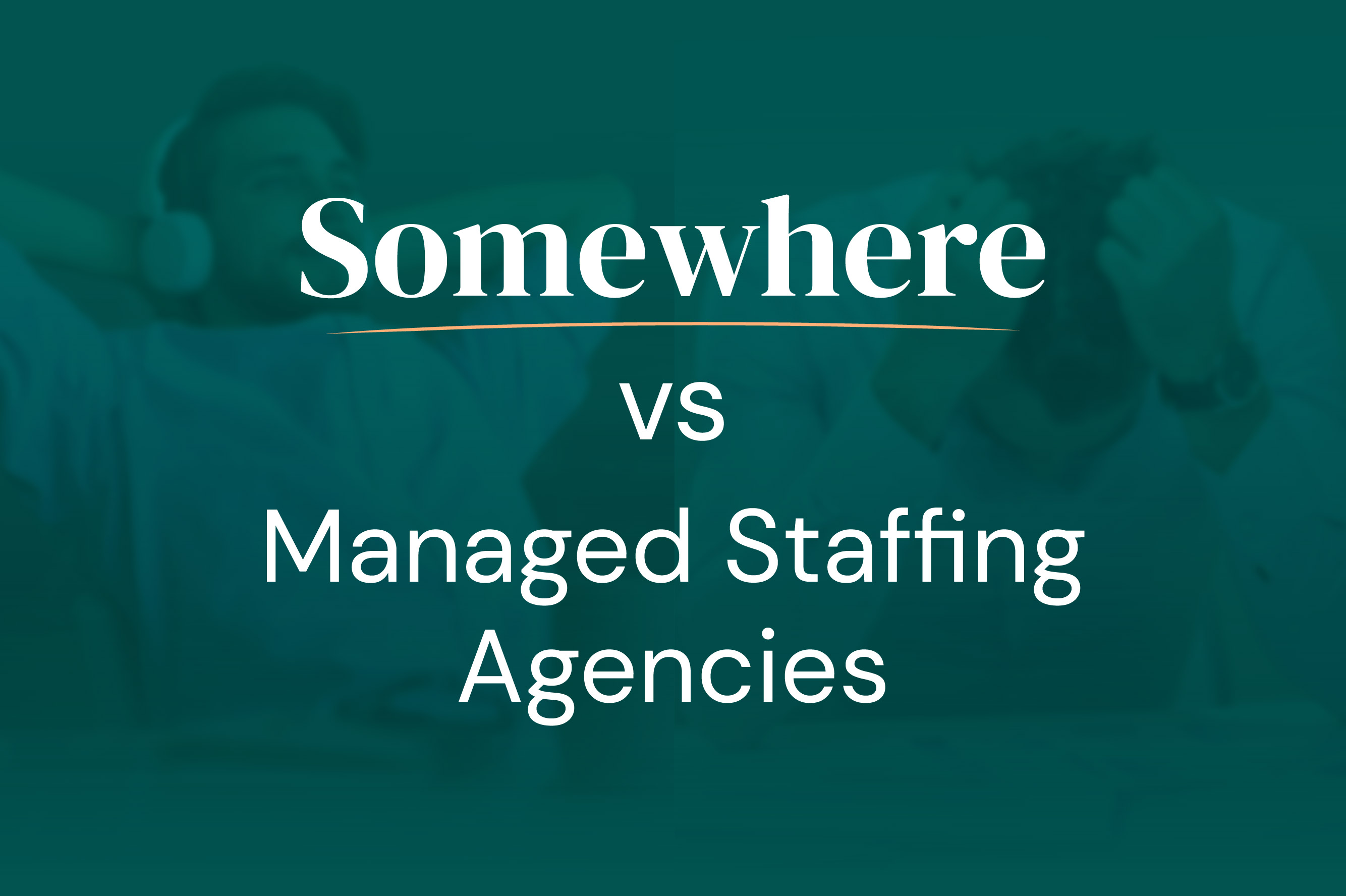A few years ago, I worked with a fintech startup that had just let go of a senior product manager three months after hiring him. On paper, he was flawless. Brand-name employers, polished communication, confident presence in every interview. The founders were thrilled. But once he started, cracks appeared quickly: missed deadlines, tense cross-functional meetings, and a steady stream of excuses about “unclear priorities.”
When I dug into the original interview notes, it was clear the signals were there all along. He’d subtly shifted responsibility in every story he told, avoided specifics when discussing setbacks, and bristled at follow-up questions about collaboration. None of those behaviors was glaring on its own, but together, they painted a pattern. The team hadn’t seen it because they were focused on credentials rather than cues.
That experience stuck with me. Not because the hire failed, but because it showed how easy it is to rationalize red flags when you want someone to be the right fit. The best recruiters have the skill that goes beyond just noticing those patterns — they know how to interpret them.
Why “Red Flags” Matter in Hiring
Hiring mistakes don’t just show up on a balance sheet. They ripple through culture, burn out good people, and quietly drain momentum.
The U.S. Department of Labor estimates that a bad hire can cost up to 30% of that person’s annual salary, but most leaders will tell you the real cost is higher. It’s the weeks spent reassigning work, the frustration that creeps into team meetings, the hesitation that follows the next time you think you’ve found “the one.”
That’s why the idea of a “red flag” matters — not as a scare tactic, but as an early detection system. A red flag isn’t always a dealbreaker. It’s a data point. Sometimes it points to a deeper issue: integrity gaps, accountability problems, misaligned values. Other times, it’s simply a signal to dig further. Maybe a candidate’s short job tenures reflect rapid-growth startups, not instability. Maybe a gap year was spent freelancing, not floundering.
The danger isn’t in the red flag itself but in missing or misreading it. Skilled recruiters act as interpreters, not judges. They know which signals demand clarification and which ones require caution. Their job isn’t to weed people out. It’s to surface the truth early enough that you can make a confident, informed decision.
What Counts as a Candidate Red Flag
Every experienced recruiter eventually develops a sixth sense for when something doesn’t quite add up. It’s not always about catching someone in a lie; it’s about spotting the subtle inconsistencies that hint at risk. A candidate red flag can be behavioral, contextual, or factual: a pattern of vague answers, a resume that feels over-polished, or a story that changes slightly each time it’s told.
These aren’t reasons to dismiss someone outright. They’re prompts to investigate. The goal is to understand whether what you’re seeing is a reflection of character, communication style, or circumstance.
Broadly speaking, red flags fall into two categories:
- Minor warning signs: Signals that may warrant clarification, such as brief employment stints, resume gaps, or a lack of metrics in achievement statements. They often resolve with a single good follow-up question.
- Serious disqualifiers: Issues tied to integrity, accountability, or professionalism. These include misrepresented experience, blame-shifting, or signs of toxicity in how someone talks about colleagues or clients.
The key is context. A resume gap, explained as time spent caring for a family member, carries different weight than one followed by vague answers and missing references. Skilled recruiters know how to press gently, verify facts, and interpret what’s not being said. They’re trained to translate patterns into insight and to distinguish between an honest story and a convenient one.
.webp)
Resume and Background Red Flags
Most hiring risks reveal themselves long before the interview ever happens. You just have to know where to look. When I’m reviewing a resume, I’m not only checking for credentials. I’m reading for consistency, specificity, and self-awareness. Here are the most common red flags that skilled recruiters learn to interpret early:
- Inconsistent or conflicting employment history. Dates that overlap or roles that appear out of order often signal more than a formatting issue. A good recruiter will cross-check against LinkedIn and dig into what really happened during those transitions.
- Frequent job changes without explanation. Mobility can mean adaptability, but too many short stints with no story behind them can point to deeper problems with fit, resilience, or follow-through.
- Inflated titles or vague role descriptions. “Head of Growth” at a five-person startup can mean many things. Recruiters know how to calibrate titles against team size, scope, and reported results to verify credibility.
- Employment gaps with no context. Gaps aren’t automatically negative. But when a candidate dodges the question or provides a generic “personal reasons” response without clarity, it’s worth probing.
- Dodged background checks or missing references. Any resistance here is a serious red flag. A skilled recruiter frames these checks as a standard step, making refusal or delay a meaningful signal.
The best recruiters don’t assume the worst; they investigate. They understand that behind every red flag is either a reasonable explanation or a legitimate concern. Their role is to find out which one you’re dealing with before you make the hire, not after.
Interview Behavior Red Flags
If the resume tells the story, the interview reveals the subtext. It’s where habits, attitudes, and interpersonal awareness come into focus. Even strong candidates can trip subtle alarms, and not because they’re unqualified but because how they communicate under pressure tells you what collaboration might actually look like once they’re on the team.
Here are the patterns seasoned recruiters pay close attention to:
- Vague or evasive communication. When candidates can’t articulate their process or outcomes, it’s often because they haven’t reflected on them or because the results weren’t theirs to claim. Follow-up questions that request specific examples usually separate genuine contributors from resume embellishers.
- Blaming others for past failures. Everyone has dealt with a difficult boss or project. But when every story centers on how someone else dropped the ball, that’s a red flag for accountability and self-awareness.
- Excessive negativity about previous employers. A healthy critique shows perspective. Cynicism shows resentment. The distinction matters more than most realize.
- Lack of curiosity or enthusiasm. A disengaged candidate in an interview rarely becomes an engaged employee. Recruiters notice when questions feel perfunctory or when energy dips after compensation topics.
- Overemphasis on perks and benefits. There’s nothing wrong with asking about compensation, but when it dominates the conversation, it can signal short-term motivation or misaligned priorities.
- Rudeness or disregard for others in the process. A candidate who’s polite to the hiring manager but curt with the coordinator, or dismissive of junior interviewers, shows you exactly how they’ll behave on your team.
I once observed a candidate for a senior marketing role who kept interrupting every question to pivot back to his own talking points. On paper, he was exceptional. But in a panel setting, his lack of listening turned the room. The hiring team realized they were just watching a solo act instead of evaluating a strategist.
Recruiters are trained to notice those subtleties. They don’t just hear the words. They read the tone, pacing, and intent behind them. And when something feels off, they don’t ignore it. They note it, test it, and validate whether it’s a communication quirk or a real behavioral risk.
Culture and Motivation Red Flags
The hardest red flags to spot are often the ones that don’t look like problems at all. A polished communicator with strong credentials might seem ideal until you realize their underlying motivations are completely misaligned with your company’s culture. These mismatches rarely show up in the first month. They emerge slowly, in the way someone resists feedback, prioritizes their own agenda, or disengages when the work stops feeling glamorous.
Here’s what experienced recruiters listen for:
- Values mismatch. When candidates struggle to describe what matters to them at work, or their answers contradict your organization’s core principles (for instance, saying they thrive on autonomy in a team-driven environment), that’s an early signal of friction.
- Resistance to collaboration or feedback. A candidate who talks exclusively about “my projects” and “my results” without mentioning team effort might not adapt well in environments that require shared ownership.
- Rigid or defensive thinking. Flexibility is one of the strongest predictors of long-term success. When a candidate can’t acknowledge mistakes or pivot every question back to external circumstances, it’s often a sign that they’ll struggle in evolving conditions.
- Short-term motives. “I’m just looking for something for now” might sound harmless, but it often means the candidate isn’t mentally investing in your mission. Recruiters watch for patterns that suggest transactional intent rather than commitment.
- Status-driven priorities. Obsession with title, prestige, or optics (especially when disconnected from the actual scope of the work) can foreshadow disengagement once the novelty wears off.
I once consulted for a scaling SaaS company that hired a senior engineer whose resume was impeccable and whose interview performance was flawless. Within two months, though, it became clear his main focus was status. He was more interested in being “the smartest person in the room” than in helping his team deliver.
That’s why great recruiters probe beyond skills. They assess whether someone’s “why” aligns with the company’s “how.” Technical ability can be trained; values and mindset usually can’t.
.webp)
How a Skilled Recruitment Partner Helps You Catch Red Flags Early
A strong recruiter doesn’t rely on “gut feel”; they use structured questioning, verification, and collaboration to see what others might miss.
They ask for evidence, not anecdotes, digging into specifics through behavioral interviews and STAR-style probes. They verify what’s said through references and background checks. They use scorecards and debrief sessions to keep bias out of the equation.
Most importantly, they know what to do with what they find. A good recruiter can tell the difference between a one-off mistake and a character pattern. That judgment is what saves teams from costly mis-hires and gives hiring managers confidence that the people reaching the final round have already been tested for integrity as well as skill.
If you don’t have that level of rigor built into your hiring process yet, it’s worth partnering with a recruiter who does. The difference between spotting a red flag early and cleaning up after it later is rarely just time. It’s culture, credibility, and momentum.
Turning Red Flags Into Better Hiring Decisions
Every candidate comes with unknowns, but the difference between a good and a bad hire is how well you surface and interpret them before making the offer. Red flags aren’t barriers; they’re information. Used well, they help you hire with clarity and caution.
That’s where a skilled recruiter earns their value. They listen for patterns, validate what’s real, and give you the context you need to make confident, defensible decisions. A good recruiter protects your culture long before a contract is signed.
If you’re ready to bring that level of rigor into your own hiring, get in touch using the form below. Somewhere helps companies build hiring processes that make smarter, safer, more strategic decisions about who joins the team.








.webp)





.avif)